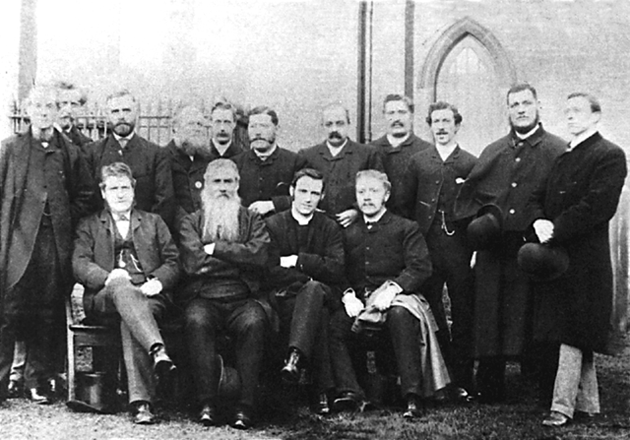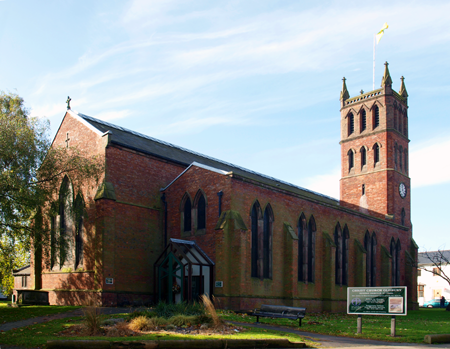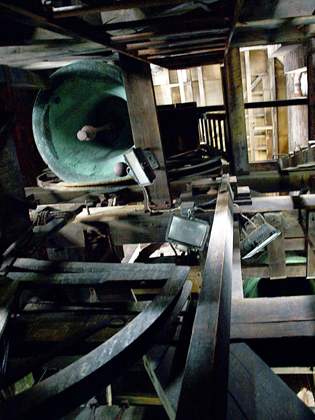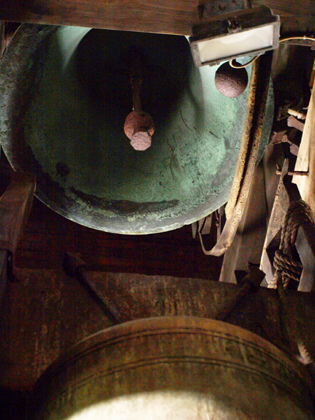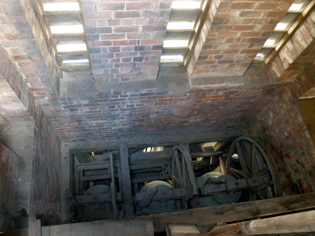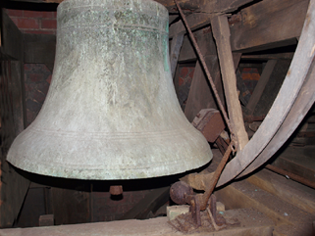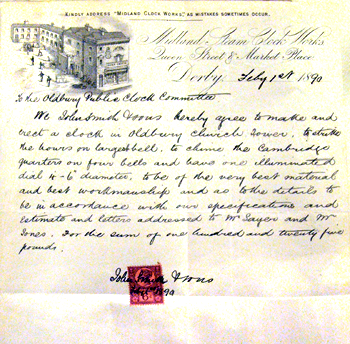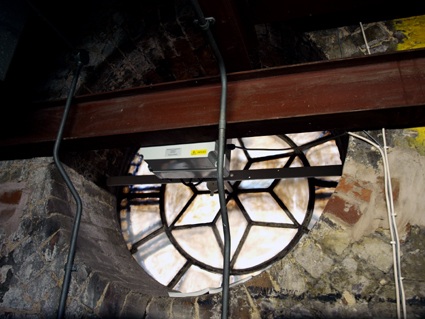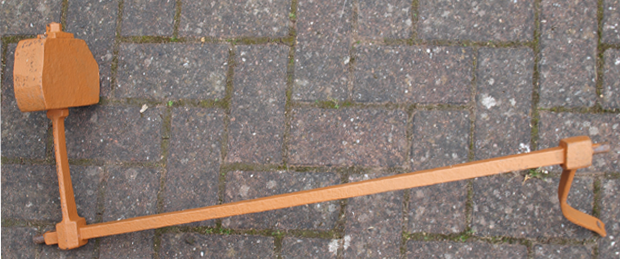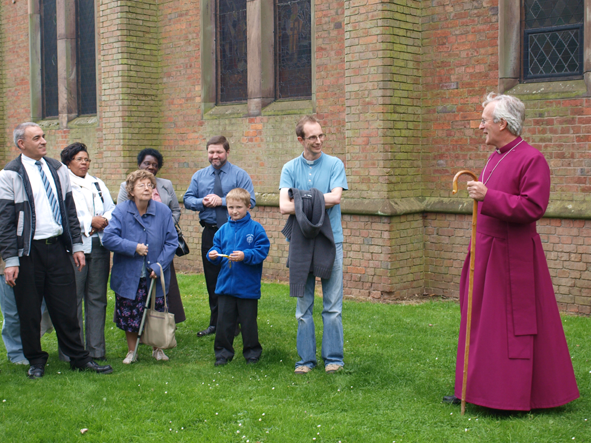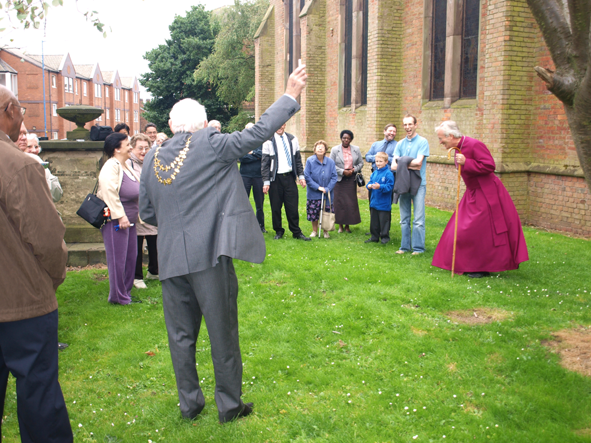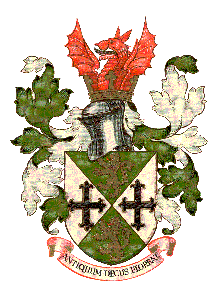
|
History of Oldbury, Langley and
Warley |
||
|
Communities of the West
Midlands |
||
|
The website of Langley Local
History Society - Oldbury Local History Group - Old Warley Local
History Society | ||
 | ||
| HOME | |
| NEWS & EVENTS | |
| HISTORY SOCIETIES | |
| PUBLICATIONS | |
| GALLERY | |
| QUESTIONS | |
|
article 006 CHRISTCHURCH CLOCK AND BELLS |
Christchurch Bells When Christchurch was opened in Oldbury in 1841, it had two bells, a new one cast by Thomas Mears of London, and a bell from 1733 which had been moved from the old chapel in the market place. The church was not well endowed at this time, and its interior was plain. By the time of Queen Victoria’s Jubilee in 1887, the Anglican church in Oldbury was well established, better endowed, and Christchurch had been more richly decorated. What was needed was a peal of bells to herald the great events of the town, so a committee was appointed to raise the money for new bells to celebrate the Jubilee.
The
eight bells [1], in G, were cast by John Warner and Co,
Crescent Foundry, London, and have inscriptions recording their
donors: Several of the donors were local businessmen: George and Alfred Thompson were maltsters in the town, John Smart Wakeman an iron merchant, and Samuel Wright a preserve manufacturer. Alexander Macomb Chance was the Managing Director of the Alkali Works. Mary Phoebe Palmer was the daughter of William Freeth, former occupier of ‘The Big House’ in Church Street, and the wife of Rev Palmer, who were large landowners in the town.
Photographs by Dr T Daniels, taken February 2009, before the installation of the latest mechanism The Felstead database [2] records sixty-four valid peals rung on the bells between 20 December 1887, a peal of Stedman Triples, and 26 June 1954, a peal Yorkshire Surprise Major. Apart from these special peals, the bells were used regularly on Sundays and to mark local activities. They were rung when Lord Roberts came to open a rifle range at Chance and Hunt’s works on 4 April 1907, and this proved so popular that the Fourth of April was declared ‘Lord Roberts Day’, and the bells rung annually on that day in Oldbury. In 1908 the 'Weekly News' reported [3]: "Saturday last being the first anniversary, the Church bells were rung from 12 till 4, by the following: Messrs J Jagger, Sen., J Ford, R Hall, J Jagger, Jun., J Bant, J Grigg, A Savage, J Bird and J Parish. During the afternoon Councillor Parkes, JP (chairman of the District Council), presented a cheque to the ringers for the interest on £100, which Mr A M Chance invested for that purpose twelve months ago...". The bell-ringing records of Reuben Hall are held at Sandwell Archives [4]. John Jagger, who kept the ‘Wrexham Hotel’ opposite the church, was the leader of the bell-ringers at the time. His son, John Palmer Jagger, also a member of the team, was killed at Gallipoli when serving with 4th Worcestershire Regiment. In 1915 the bells were rung on 3 April because 4 April was Easter Day! The bells were rehung in 1937. At some point they were also fitted with a mechanism whereby they could be sounded via hammers connected to fixed ropes which were pulled outwards to sound the bell. After WW2, the bells were used less frequently, and by the mid-1960s, the bells could not be rung regularly because of the state of the tower. In the 1990s, the Church was saved from demolition and re-designed to provide office accommodation in the nave and a worship area in the chancel. Air-conditioning equipment was installed in the ringing gallery, and a concrete floor placed just below the bells. This made it impossible to swing the bells, although the mechanism remained, and thus the Christchurch bells fell silent.
The 1890
Clock Once the bells were operational, attention was paid to installing a new clock in the tower, the original having stopped working. Again, a committee was appointed, under the chairmanship of the vicar, Revd William A Taylor, and the curate, Revd A D Pennington, BA. It was the intention for the clock to strike the quarter hours by the ‘Cambridge’ (or as they are better known, the ‘Westminster’) Chimes, and to strike the hours on the Tenor bell. Again, the committee set about raising funds and identifying a supplier. The committee is recorded on the plaque that was to be fixed to the clock, an amended draft of which is held at Sandwell Community History and Archives Service [5]. Their archive includes the Treasurer’s Book for the Clock Committee and various invoices and papers. The first donations were made on 1 December 1889, and the largest donations came from the town’s main benefactors, £20 each from Albright & Wilson and Chance & Hunt, and £10 from Lewis Demuth of the tar works, and an anonymous £20 donation. The total raised was £195-7-0, and the project was supported by a wide range of companies and individuals in Oldbury.
The ‘Weekly News’ [6] described the new clock thus: “The new Church Clock is fitted with all the latest improvements, and will be a standard for the time-keeping of the town. It is guaranteed by the makers, John Smith and Sons, Derby, to keep time to very great accuracy. It has one illuminated dial five feet across, and there is special automatic mechanism by which the gas lights are turned up and down at the proper times. The Cambridge quarter chimes are played upon the 2nd, 3rd, 4th and 7th bells, and the hours are struck upon the largest bell. The works of the clock are of the best possible construction, all the wheels being of the best gun metal, with machine cut teeth; all the pinions of the best cast steel, all the bearings of gun metal; steel ropes are used for the weights. The main frame is on one solid iron casting planed smooth and true with all the various wheels, etc., affixed to it by screws in such a manner that any separate one may be removed without interfering with the remainder. This is a very great convenience in large clocks.” The clock was started by Mrs Taylor, the Vicar’s wife, on 23rd June 1890. After the short ceremony, the newspaper reports, “... members of the Society of the Archdeaconry of Stafford rang a date touch (1890) of grandsire triples, J W Sayer, treble, T Horton 2, J Frisby 3, W S Small 4, R Hall 5, J Hall 6, S Reeves (conductor) 7, R Gold 8. Time 1 hour 4 minutes.” The invoices include one covering a celebration from 'The Talbot Inn', Oldbury, dated 24th June 1890 for refreshments and drinks totalling £2 17s 5d. It includes 47 glasses of whisky, 3 of brandy and 1 of port, 17 sodas and 2 lemonades, together with 41 cigars. A bottle of stout was provided for the police and a pint of bitter for the cabby! Despite this, there was a small surplus after all the immediate expenses had been paid. This was used to provide two guineas per year to have the clock wound, and when the fund was finally closed in 1911 [7], £2 19s 5d was left to be paid to the Vicar towards future costs of overhauling and maintaining the clock. The gas lights in the tower were replaced by electricity at some point, but the chimes eventually fell silent.
Rejuvenation Under Canon John Barnett, the Vicar of Oldbury, a fund was established in 2006 to overcome the silence of the tower. The bells could not be swung again because of the weakness of the tower and the changes made when the church was restored in the 1990s. Campanologists would have to remain disappointed! However, it was still possible to strike the bells and to install electronic controls to re-instate the chimes to the clock and provide suitable peals for special occasions. The cost of the project was around £15,000.
The original clock hammers were removed, and smaller modern hammers installed by English Clockmakers during 2009. The clock again sounds the quarters with the Cambridge (or Westminster) Chimes and the hours on the tenor. At the push of a button, it is now possible to play various peals and tunes on the bells.
At a short ceremony on Thursday 17th September the Bishop of Birmingham, Rt Revd David Urquhart, rededicated the bells and they pealed out across the town. The peal, the half-hour chime and the tune ‘Here comes the bride’ recorded at rededication, with extraneous sounds of celebration, can be played here: ..........Listen to the bells [3 minutes]
References
This article © Dr Terry Daniels 2009 - contact for permission to reproduce | ||||||||||||||||||||||||||||||||||||||
